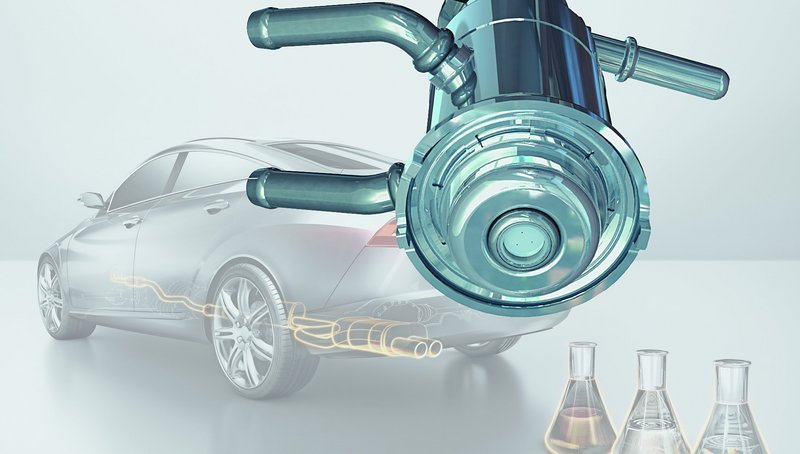Clean Diesel: New AdBlue® Dosing System from Continental Plays Part in Achieving Optimum NOx Levels
- "auto motor und sport" and Deutsche Umwelthilfe (a German environmental forum) tested nitrogen-oxide emissions from diesel cars under real driving emissions (RDE) conditions.
- The winner of both tests is fitted with the recently developed Continental dosing system and was almost 50 percent below even the strictest laboratory limits
Regensburg, December 08, 2016. September 1, 2017 is looming large on the horizon. From this date, exhaust-gas measurements during the type approval of new cars will also be taken under real driving conditions. Since, for nitrogen-oxide emissions from diesel engines in particular, significant differences have emerged between laboratory values and real driving emissions (RDE), exhaust-gas tests on diesel vehicles are increasingly being run under real driving conditions. For example, the magazine "auto motor und sport" recently fitted four Diesel engines with a PEMS (portable emissions measurement system) in order to calculate their NOx emissions, while Deutsche Umwelthilfe (DUH) put 36 diesel models under the microscope. In both tests, most vehicles exceeded the RDE limit, due to come into effect in 2017, of 168 mg/km. However, the tests also show that very "clean" diesels are already on the market. For example, a new model from a premium German manufacturer fell below even the laboratory tests' applicable limit of 80 mg/km on the road by almost 50 percent and was declared the winner in both tests. These low NOx levels are also the success of the highly efficient exhaust-gas aftertreatment. The winner of the tests features a new AdBlue® dosing system from the technology company Continental, which makes its debut in this model.
"We are delighted to have been able to play our part in developing these pioneering new engine families," says Wolfgang Breuer, Head of the Engine Systems Business Unit at the Continental Powertrain Division. "The latest test results in real driving conditions clearly show that diesel technology and its low CO2 emissions can play an important role in reducing greenhouse gases, when combined with effective exhaust-gas aftertreatment."
The four-cylinder diesel engine of the test winner uses SCR (selective catalytic reduction) technology for its exhaust-gas aftertreatment, during which an injector adds the AdBlue® urea to the exhaust pipe, thus triggering a chemical process – selective catalytic reduction – in the catalytic converter. The result is a significant reduction in nitrogen-oxide emissions.
Separate Electronic Control Unit, Water-Cooled Injector, and Fluid Diagnostics
Continental provides the complete AdBlue® dosing system for the new engine family. Its main components are the injector, a tank flange module, which includes the pump, as well as its own electronic control unit. This electronic control unit, which is coupled with the engine control unit, not only controls the injector, it also regulates the pump pressure and diagnoses the fill level of the AdBlue® tank, for example.
"This model is one of the first systems on the car market to measure the urea concentration of the fluid in the AdBlue® tank. With the help of the Urea Concentration Sensor on the tank flange module, the system detects whether the tank has been filled with water or a solution with a concentration that is too low", added Dr. Markus Distelhoff, Head of Business Unit Fuel & Exhaust Management, Powertrain Division.
Here, the SCR system is not in the underbody area, it is placed directly on the engine instead, to ensure optimum operating temperatures for the exhaust-gas aftertreatment. This also means that the injector must be designed to handle ambient temperatures of 200°C and above, which is where the first water-cooled AdBlue® injection valve from Continental comes into play. The dosing system is also protected against the cold. Because the urea solution freezes at temperatures below minus 11°C, the tank flange module and the injector are connected by a heatable line, which is also offered on the market by the Continental ContiTech Division.

Simone Geldhäuser
Head of Media Relations, Spokesperson Finance, Business and Technology
Vitesco Technologies

